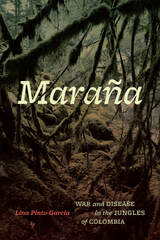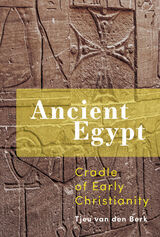
The earliest Christian myths emerged in the melting pot of gnostic Alexandria—not in orthodox Jerusalem, classical Athens, or legalistic Rome. In this book, Tjeu van den Berk traces the sources of the Christian faith to the banks of the river Nile. Focusing on ancient archetypes, van den Berk underscores the striking similarities between the Egyptian and Christian religions. In this fascinating study, he explores the symbolism of the Trinity, the cross, and the myths of a god born of a virgin. He also traces the origins of the stories of Lazarus and Saint George, and he finds stunning parallels between Egyptian mythology and the Book of Revelation.

THIS EDITION HAS BEEN REPLACED BY A NEWER EDITION..
From the awesome grandeur of the great pyramids to the delicacy of a face etched on an amulet, the spellbinding power of the art of ancient Egypt persists to this day. This beautifully illustrated book conducts us through the splendors of this world, great and small, and into the mysteries of its fascination in its day as well as in our own. What did art, and the architecture that housed it, mean to the ancient Egyptians? Why did they invest such vast wealth and effort in its production? These are the puzzles Gay Robins explores as she examines the objects of Egyptian art--the tombs and wall paintings, the sculpture and stelae, the coffins, funerary papyri, and amulets--from its first flowering in the Early Dynastic period to its final resurgence in the time of the Ptolemies.
Spanning three thousand years, her book offers a thorough and delightfully readable introduction to the art of ancient Egypt even as it provides insight into questions that have long perplexed experts and amateurs alike. With remarkable sensitivity to the complex ways in which historical, religious, and social changes are related to changes in Egyptian art, she brings out the power and significance of the image in Egyptian belief and life. Her attention to the later period, including Ptolemaic art, shows for the first time how Egyptian art is a continuous phenomenon, changing to meet the needs of different times, right down to the eclipse of ancient Egyptian culture. In its scope, its detail, and its eloquent reproduction of over 250 objects from the British Museum and other collections in Europe, the United States, and Egypt, this volume is without parallel as a guide to the art of ancient Egypt.

From the awesome grandeur of the Great Pyramids to the delicacy of a face etched on an amulet, the spellbinding power of ancient Egyptian art persists to this day. Spanning three thousand years, this beautifully illustrated history offers a thorough and delightfully readable introduction to the artwork even as it provides insight into questions that have long engaged experts and amateurs alike. In its scope, its detail, and its eloquent reproduction of over 250 objects, Gay Robins’s classic book is without parallel as a guide to the art of ancient Egypt.
This eagerly awaited new edition includes many new color photographs and a fully revised and updated bibliography.
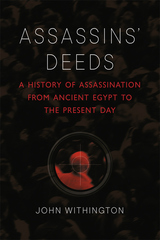
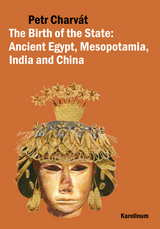
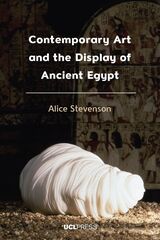
Contemporary art installations in Egyptian galleries are often framed as dialogues between past and present—but what if they are, instead, shaped by the museum itself? Contemporary Art and the Display of Ancient Egypt argues that both contemporary and ancient works are mediated through the structures and ideologies of the museum space. In this seminal work, Alice Stevenson examines how artists’ work influences museum discourse and public engagement with ancient artifacts.
Drawing on case studies from the British Museum, the Egyptian Museum in Turin, and the State Museum of Egyptian Art in Munich, this book assesses the motivations behind these interventions and their lasting impact. Through an evidence-based approach, Stevenson offers new insights into how curators, scholars, and artists can collaborate to create more meaningful and politically engaged museum experiences. Of particular interest to Egyptologists, museum professionals, and contemporary art scholars, this work redefines the role of artistic intervention in shaping our understanding of ancient cultures.
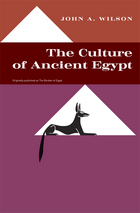
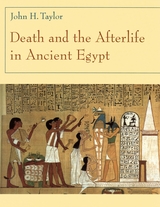
The author describes in detail the numerous provisions made for the dead and the intricate rituals carried out on their behalf. He considers embalming, coffins and sarcophagi, shabti figures, magic and ritual, and amulets and papyri, as well as the mummification of sacred animals, which were buried by the millions in vast labyrinthine catacombs.
The text also reflects recent developments in the interpretation of Egyptian burial practices, and incorporates the results of much new scientific research. Newly acquired information derives from a range of sophisticated applications, such as the use of noninvasive imaging techniques to look inside the wrappings of a mummy, and the chemical analysis of materials used in the embalming process. Authoritative, concise, and lucidly written, Death and the Afterlife in Ancient Egypt illuminates aspects of this complex, vibrant culture that still perplex us more than 3,000 years later.
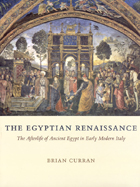
Fascination with ancient Egypt is a recurring theme in Western culture, and here Brian Curran uncovers its deep roots in the Italian Renaissance, which embraced not only classical art and literature but also a variety of other cultures that modern readers don’t tend to associate with early modern Italy. Patrons, artists, and spectators of the period were particularly drawn, Curran shows, to Egyptian antiquity and its artifacts, many of which found their way to Italy in Roman times and exerted an influence every bit as powerful as that of their more familiar Greek and Roman counterparts.
Curran vividly recreates this first wave of European Egyptomania with insightful interpretations of the period’s artistic and literary works. In doing so, he paints a colorful picture of a time in which early moderns made the first efforts to decipher Egyptian hieroglyphs, and popes and princes erected pyramids and other Egyptianate marvels to commemorate their own authority. Demonstrating that the emergence of ancient Egypt as a distinct category of historical knowledge was one of Renaissance humanism’s great accomplishments, Curran’s peerless study will be required reading for Renaissance scholars and anyone interested in the treasures and legacy of ancient Egypt.
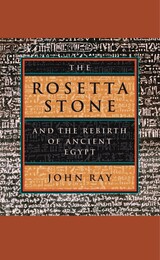
The Rosetta Stone is one of the world’s great wonders, attracting awed pilgrims by the tens of thousands each year. This book tells the Stone’s story, from its discovery by Napoleon’s expedition to Egypt to its current—and controversial—status as the single most visited object on display in the British Museum.
A pharaoh’s forgotten decree, cut in granite in three scripts—Egyptian hieroglyphs, Egyptian demotic, and ancient Greek—the Rosetta Stone promised to unlock the door to the language of ancient Egypt and its 3,000 years of civilization, if only it could be deciphered. Capturing the drama of the race to decode this key to the ancient past, John Ray traces the paths pursued by the British polymath Thomas Young and Jean-François Champollion, the “father of Egyptology” ultimately credited with deciphering Egyptian hieroglyphs. He shows how Champollion “broke the code” and explains more generally how such deciphering is done, as well as its critical role in the history of Egyptology. Concluding with a chapter on the political and cultural controversy surrounding the Stone, the book also includes an appendix with a full translation of the Stone’s text.
Rich in anecdote and curious lore, The Rosetta Stone and the Rebirth of Ancient Egypt is a brilliant and frequently amusing guide to one of history’s great mysteries and marvels.
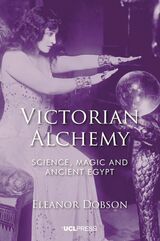
With its material remnants paradoxically symbolizing both antiquity and modernity to Victorian audiences, ancient Egypt was at once evocative of ancient magical power and of cutting-edge science, a tension that might be productively conceived of as “alchemical.” Examining literature and other cultural forms including art, photography, and early film, Eleanor Dobson herein traces the myriad ways in which the Victorian fascination with ancient Egypt evoked the entwined forces of magic and science, providing more than a mere setting for Orientalist fantasies and nightmares. From imaging technologies and astronomy to investigations into the electromagnetic spectrum and the human mind itself, this book demonstrates how conceptions of modernity were inextricably bound up in the contemporary reception of the ancient world, illustrating how such ideas took root and flourished in the Victorian era and persist to this day.

An idealized version of women appears everywhere in the art of ancient Egypt, but the true nature of these women’s lives has long remained hidden. Gay Robins’s book, gracefully written and copiously illustrated, cuts through the obscurity of the ages to show us what the archaeological riches of Egypt really say about how these women lived, both in the public eye and within the family.
The art and written records of the time present a fascinating puzzle. But how often has the evidence been interpreted, consciously or otherwise, from a male viewpoint? Robins conducts us through these sources with an archaeologist’s relish, stripping away layer after interpretive layer to expose the reality beneath. Here we see the everyday lives of women in the economic, legal, or domestic sphere, from the Early Dynastic Period almost 5,000 years ago to the conquest of Alexander in 332 BC. Within this kingdom ruled and run by men, women could still wield influence indirectly—and in some cases directly, when a woman took the position of king. The exceptional few who assumed real power appear here in colorful detail, alongside their more traditional counterparts. Robins examines the queens’ reputed divinity and takes a frank look at the practice of incest within Egypt’s dynasties. She shows us the special role of women in religious rites and offices, and assesses their depiction in Egyptian art as it portrays their position in society.
By drawing women back into the picture we have of ancient Egypt, this book opens a whole new perspective on one of world history’s most exotic and familiar cultures.
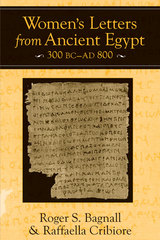
More than three hundred letters written in Greek and Egyptian by women in Egypt in the millennium from Alexander the Great to the Arab conquest survive on papyrus and pottery. These letters were written by women from various walks of life and shed light on critical social aspects of life in Egypt after the pharaohs. Roger S. Bagnall and Raffaella Cribiore collect the best preserved of these letters in translation and set them in their paleographic, linguistic, social, and economic contexts. As a result, Women's Letters from Ancient Egypt, 300 BC-AD 800, provides a sense that these women's habits, interests, and means of expression were a product more of their social and economic standing than of specifically gender-related concerns or behavior.
Women's Letters from Ancient Egypt, 300 BC-AD 800, takes the reader through theoretical discussions about the handwriting and language of the letters, the education and culture of the writers, and the writers' everyday concerns and occupations, as well as comparing these letters to similar letters from later historical periods. For each letter, discussion focuses on handwriting, language, and content; in addition, numerous illustrations help the reader to see the variety of handwritings. Most of this material has never been available in English translation before, and the letters have never previously been considered as a single body of material.
READERS
Browse our collection.
PUBLISHERS
See BiblioVault's publisher services.
STUDENT SERVICES
Files for college accessibility offices.
UChicago Accessibility Resources
home | accessibility | search | about | contact us
BiblioVault ® 2001 - 2025
The University of Chicago Press




